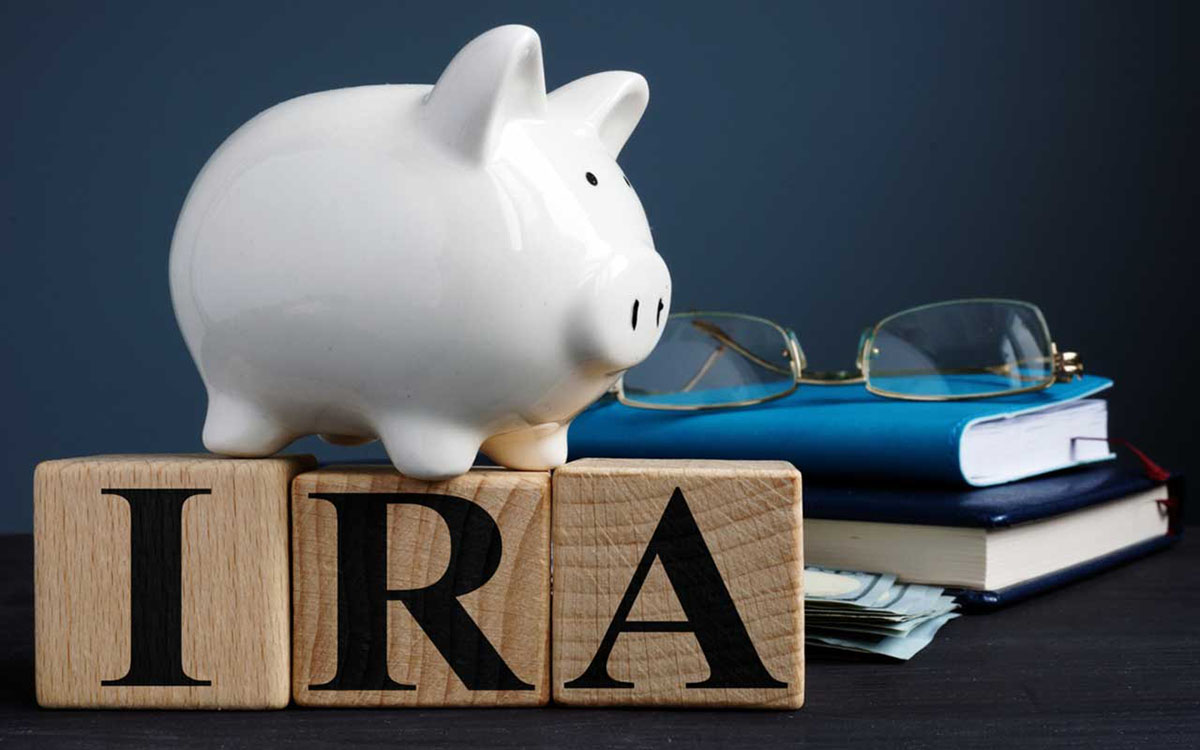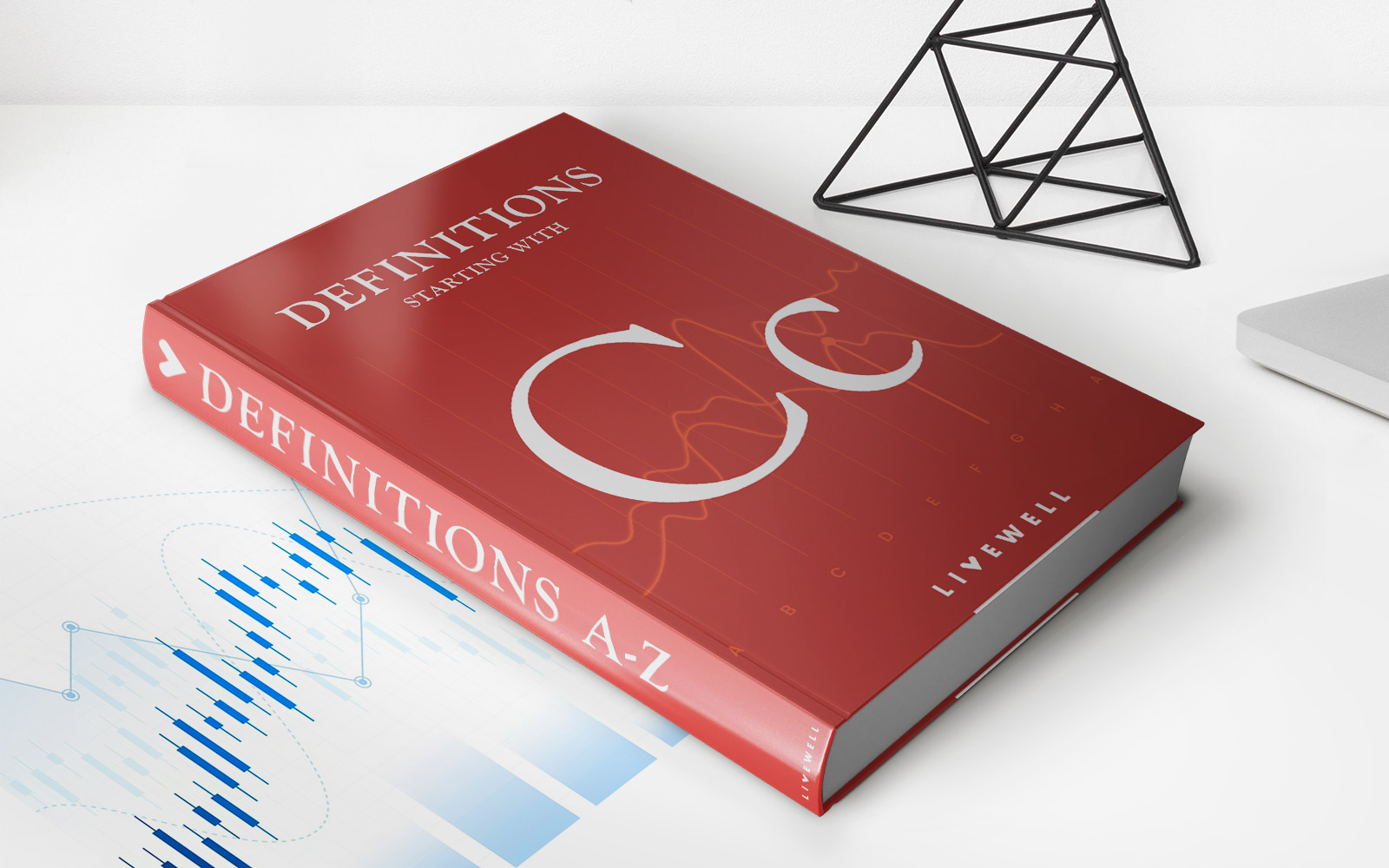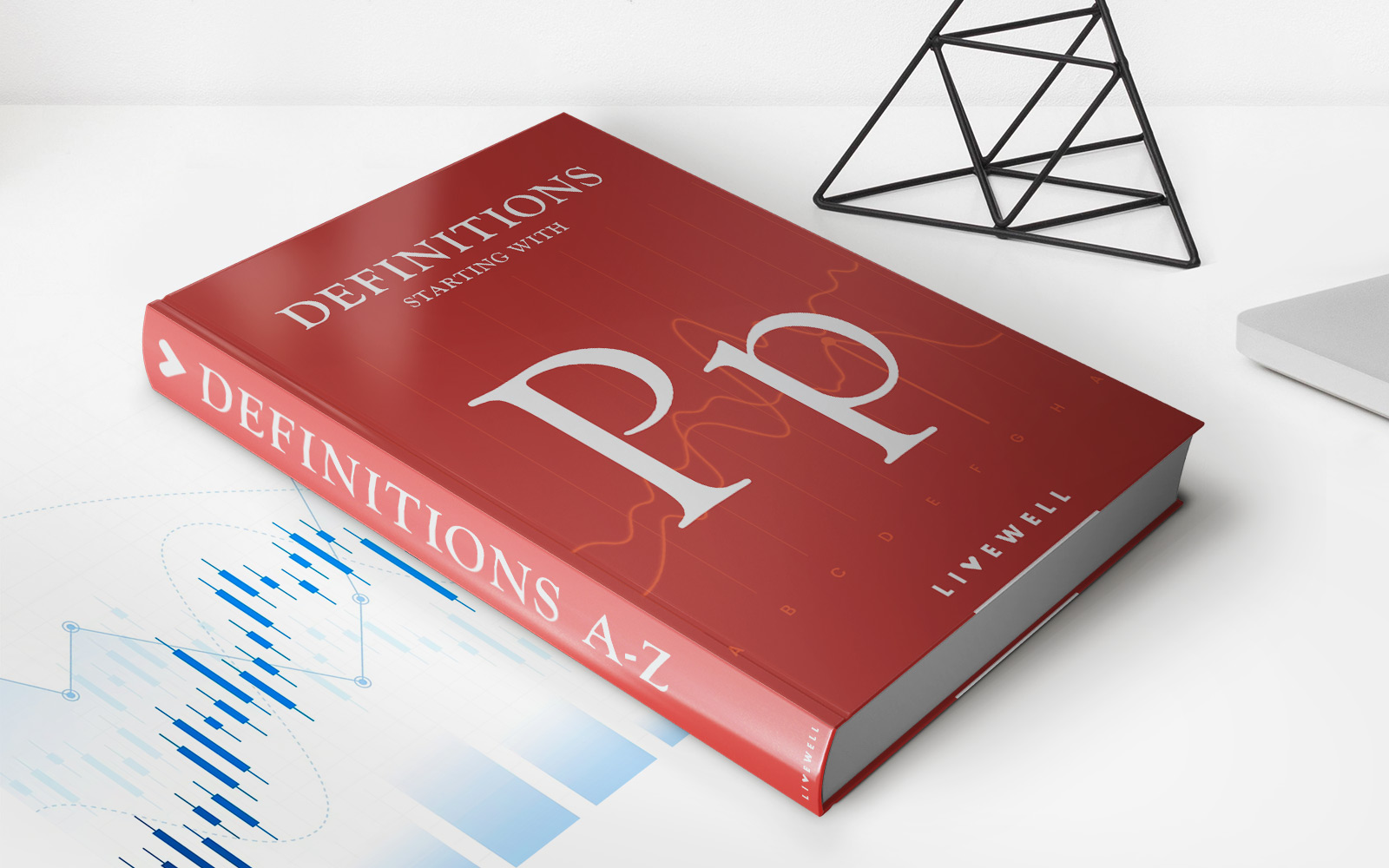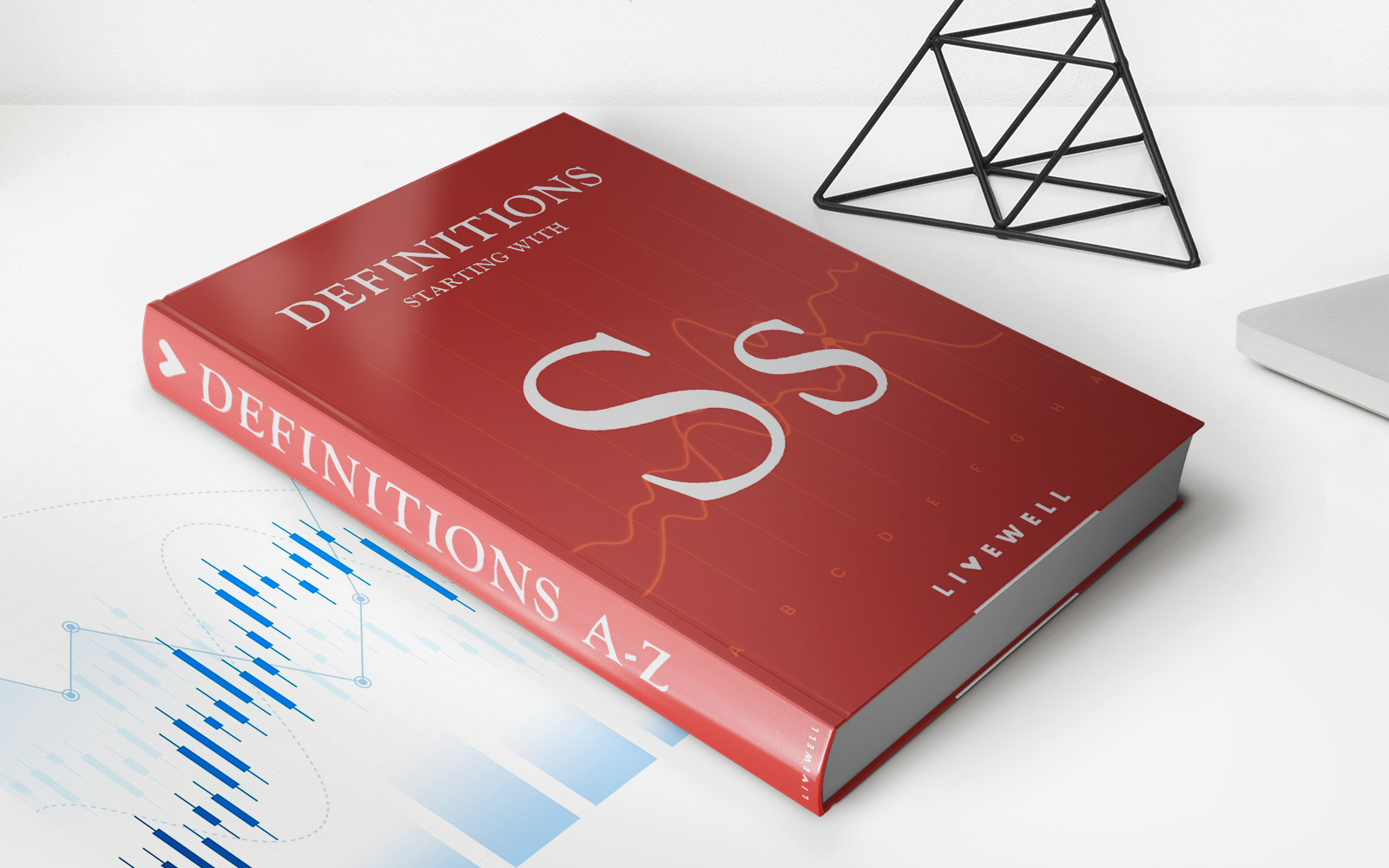

Finance
What Is Savings Account And Current Account
Modified: December 30, 2023
Learn about the differences between savings account and current account in finance. Find out which account is suitable for your financial needs.
(Many of the links in this article redirect to a specific reviewed product. Your purchase of these products through affiliate links helps to generate commission for LiveWell, at no extra cost. Learn more)
Table of Contents
- Introduction
- Definition of Savings Account
- Features of Savings Account
- Benefits of Savings Account
- Limitations of Savings Account
- Definition of Current Account
- Features of Current Account
- Benefits of Current Account
- Limitations of Current Account
- Difference between Savings Account and Current Account
- Conclusion
Introduction
When it comes to managing finances, two common types of bank accounts that individuals and businesses frequently use are savings accounts and current accounts. These accounts play different roles in helping individuals and businesses meet their financial needs. Understanding the features, benefits, and limitations of savings and current accounts is essential for making informed decisions about where to keep your money and how to manage your finances effectively.
A savings account, as the name suggests, is primarily designed for saving money. It provides a safe place to deposit and accumulate funds over time, allowing individuals to earn interest on their savings while maintaining liquidity. On the other hand, a current account, also known as a checking account, is designed for day-to-day financial transactions, such as making payments, receiving deposits, and transferring funds. It offers easy access to funds and allows for unlimited transactions.
In this article, we will delve into the differences between savings accounts and current accounts, exploring their respective features, benefits, and limitations. By the end, you will have a comprehensive understanding of these two account types, enabling you to make informed choices about which account suits your financial goals and needs.
Definition of Savings Account
A savings account refers to a type of deposit account offered by banks and financial institutions that allows individuals to securely store their money while earning a modest interest rate. It is a popular choice among individuals who want to set aside funds for future needs, emergencies, or specific financial goals.
When you open a savings account, you deposit your money into the account, and the bank pays you interest on the balance. The interest rate is typically higher compared to a current account because the funds in a savings account are not meant to be accessed frequently. Instead, they are intended to be saved and grown over time.
Savings accounts offer a range of features that make them attractive to savers. For instance, they generally have no minimum balance requirements, allowing individuals to start saving with any amount of money. They also provide a high level of security, as funds deposited in a savings account are typically insured by government-backed deposit insurance schemes.
Another notable feature of savings accounts is their liquidity. While you can easily access your money in a savings account, there might be restrictions on the number of withdrawals you can make within a certain period. These limits are designed to encourage individuals to maintain their savings and deter excessive spending.
Furthermore, savings accounts often come with the convenience of online and mobile banking, allowing account holders to manage their money, transfer funds, and monitor their account activity from the comfort of their own homes or on the go.
In summary, a savings account is a type of bank account that offers individuals a safe and secure place to save their money, while also providing the opportunity to earn interest on their deposits. With features like no minimum balance requirements and the ability to access funds when needed, savings accounts are a popular choice for those looking to save for the future.
Features of Savings Account
Savings accounts come with a range of features that make them appealing options for individuals looking to save money and earn interest. These features include:
- Interest: One of the primary features of a savings account is the ability to earn interest on the funds deposited. The interest rate varies depending on the bank and prevailing market conditions. The interest can be compounded either daily, monthly, quarterly, or annually, and it is typically calculated based on the average daily balance in the account.
- No or Low Minimum Balance: Many savings accounts do not have a minimum balance requirement or have a low minimum balance requirement, making it accessible for individuals to open an account even with a small amount of money. This feature allows everyone, regardless of their financial situation, to start saving.
- Liquidity: While savings accounts are designed to encourage individuals to save for the long term, they still offer a high level of liquidity. This means that you can access your funds whenever needed. However, there may be restrictions on the number of withdrawals allowed per month or additional fees for exceeding the limit.
- Secure: Savings accounts are considered a secure way to store your money. The funds deposited in savings accounts are typically insured by government-backed deposit insurance schemes, providing protection in case the bank fails or experiences financial difficulties.
- Online and Mobile Banking: Most banks offer online and mobile banking facilities that allow account holders to conveniently manage their savings accounts. Through these platforms, individuals can check their account balance, view transaction history, transfer funds, and set up automatic savings plans.
- ATM Access: Savings accounts usually come with ATM cards or debit cards, giving account holders access to their funds through ATMs. This enables convenient cash withdrawals, balance inquiries, and sometimes even the ability to deposit funds at ATMs.
- Additional Services: Some savings accounts offer additional services, such as the ability to set up direct deposit, link to other accounts, or establish automatic bill payments. These features add convenience to managing your finances and make saving more streamlined.
Overall, savings accounts offer a range of features that make them an attractive option for individuals looking to save and earn interest on their funds. The combination of high liquidity, accessibility, security, and additional online banking services makes savings accounts a reliable tool for achieving financial goals.
Benefits of Savings Account
Savings accounts offer several benefits that make them an essential tool for individuals looking to manage their finances and save for the future. Here are some key benefits of having a savings account:
- Interest Earnings: One of the primary advantages of a savings account is the opportunity to earn interest on your deposits. The interest rate may be modest, but over time, your savings can grow through the power of compound interest.
- Financial Security: By keeping your money in a savings account, you reduce the risk of loss or theft compared to storing cash at home. Banks offer a higher level of security with measures like fraud protection and insured deposits, providing peace of mind that your funds are safe.
- Access to Funds: While savings accounts are meant for long-term savings, they still provide easy access to your funds whenever you need them. Whether it’s for emergencies or planned expenses, you can withdraw money from your savings account or transfer funds to your current account conveniently.
- Flexibility and Control: Savings accounts give you the flexibility to save according to your own financial goals and preferences. You can deposit money into your account regularly or sporadically, allowing you to tailor your savings strategy to your income and financial circumstances.
- Building Emergency Fund: Savings accounts are an excellent tool to build an emergency fund. Having a separate account for emergencies ensures that you have funds readily available when unexpected expenses arise, helping you to avoid debt and financial stress.
- Financial Discipline: By having a dedicated savings account, you create a barrier between your daily spending and your savings. This separation encourages financial discipline, making it less tempting to dip into your savings for unnecessary expenses.
- Opportunity for Future Investments: Savings accounts serve as a stepping stone for future investments. Once you have accumulated a significant amount of savings, you can use those funds to explore other investment options such as stocks, mutual funds, or real estate.
- Teaching Financial Responsibility: Opening a savings account for children can help teach them the importance of saving and managing money responsibly from an early age. It provides an opportunity to educate them about financial concepts, such as interest, budgeting, and setting financial goals.
Overall, savings accounts offer a range of benefits, from earning interest on your deposits to providing financial security and flexibility. Whether you’re saving for short-term goals or building a nest egg for your future, a savings account is an invaluable tool for effective money management.
Limitations of Savings Account
While savings accounts have many advantages, it is important to be aware of their limitations. Here are some common limitations of savings accounts:
- Lower Interest Rates: While savings accounts offer interest on deposits, the interest rates are generally lower compared to other investment options such as stocks or bonds. This means that the growth of your savings may be slower compared to higher-yield investments.
- Minimum Balance Requirements: Some savings accounts may have minimum balance requirements that must be maintained to avoid fees or qualify for higher interest rates. This can be a limitation for individuals who are just starting to save or for those who have fluctuating account balances.
- Withdrawal Limits: Savings accounts usually have a limit on the number of withdrawals or transactions you can make within a certain period. While this helps promote saving habits, it can be a limitation if you need frequent access to your funds.
- Opportunity Cost: By keeping your money in a savings account, you may miss out on potential higher returns from other investment vehicles. Depending on your financial goals and risk tolerance, investing in stocks, bonds, or other investment options that offer higher returns may be more suitable for long-term growth.
- Inflation Risk: Over time, the purchasing power of money decreases due to inflation. While savings accounts provide a safe place to store your money, the low interest rates may not be enough to keep up with inflation, resulting in a loss of purchasing power over time.
- Interest Taxation: The interest earned from a savings account is typically taxable as income. Depending on your tax bracket, this can impact the overall return on your savings. It is important to consider the tax implications when comparing different savings options.
- Limited Access to Additional Services: Unlike current accounts, savings accounts may have limited access to additional banking services such as issuing checks or making online payments. These restrictions may not be ideal for individuals who require more frequent and diverse financial transactions.
While savings accounts are a valuable tool for saving and earning interest, it is important to understand the limitations they come with. By being aware of these limitations, you can assess whether a savings account aligns with your financial goals and consider other investment options that may offer higher growth potential and flexibility.
Definition of Current Account
A current account, also known as a checking account, is a type of bank account that is primarily used for day-to-day financial transactions and managing regular expenses. Unlike savings accounts, which are designed for accumulating and saving money, current accounts are more focused on providing convenient access to funds and facilitating seamless financial transactions.
When you open a current account, you can deposit money into the account and use it to make payments, withdraw cash, and perform various transactions. Current accounts offer a wide range of features that make them suitable for individuals and businesses with frequent financial activities.
One key feature of a current account is the ability to write checks. This allows account holders to make payments to individuals, companies, or other organizations by writing and issuing checks against the funds available in the account. Checks offer a convenient and widely accepted method of payment, particularly for larger amounts or recurring payments like rent or bills.
In addition to check-writing, current accounts also provide various electronic payment options. These can include online banking, mobile banking, and debit cards, allowing account holders to make purchases, transfer funds, and manage their account through digital platforms. Electronic payment options have become increasingly popular due to their convenience and accessibility.
Current accounts typically offer a high level of liquidity, allowing account holders to make unlimited transactions and withdraw money at any time through various channels such as ATMs, online transfers, or visiting the bank’s branch.
Furthermore, current accounts may offer features such as overdraft facilities, where the account holder can withdraw funds exceeding the available balance, up to a certain limit approved by the bank. This feature provides flexibility and helps account holders manage short-term cash flow fluctuations or unexpected expenses.
In summary, a current account is a bank account that provides convenient access to funds and facilitates day-to-day financial transactions. With features like check-writing, electronic payments, and high liquidity, current accounts are essential for individuals and businesses managing their regular expenses and financial activities.
Features of Current Account
Current accounts, also known as checking accounts, offer a range of features that make them suitable for individuals and businesses with frequent financial transactions. Here are some key features of a current account:
- Check-Writing: One of the main features of a current account is the ability to write checks. This allows account holders to make payments to individuals, businesses, or organizations by issuing checks against the funds available in the account. Checks offer a convenient and widely accepted method of payment, particularly for larger amounts or recurring payments.
- Online and Mobile Banking: Current accounts come with the convenience of online and mobile banking services. Account holders can access their accounts, view balances, track transactions, transfer funds, and pay bills through secure digital platforms. This feature allows for easy and efficient management of finances, even on the go.
- Debit Card: Current accounts usually come with a debit card that allows account holders to make purchases both online and at physical stores. The debit card is linked to the current account balance, providing immediate access to funds without the need for carrying cash or writing checks.
- ATM Access: With a current account, account holders can withdraw cash or make deposits using ATMs. ATMs provide a convenient way to access funds outside of banking hours, allowing for 24/7 availability of cash and basic banking services.
- High Liquidity: Current accounts offer high liquidity, meaning that funds can be readily accessed and used for various transactions. Account holders can make unlimited withdrawals and deposits, ensuring easy access to their money whenever needed.
- Overdraft Facility: Many current accounts provide an overdraft facility, allowing account holders to withdraw funds exceeding the account balance, up to a certain approved limit. This feature provides flexibility in managing short-term cash flow fluctuations or unexpected expenses.
- Direct Deposit: Current accounts allow for direct deposit, which means that income, such as salaries or benefits, can be directly credited to the account. This eliminates the need for physical checks and improves the efficiency of receiving regular payments.
- Account Statements: Current account holders receive regular account statements that provide a detailed summary of transactions, including deposits, withdrawals, and other account activities. These statements help account holders track their finances and reconcile their records.
Overall, current accounts offer a range of features that provide convenience, accessibility, and flexibility for managing day-to-day financial transactions. With check-writing abilities, online and mobile banking services, debit cards, and high liquidity, current accounts are essential tools for individuals and businesses to handle their regular expenses efficiently.
Benefits of Current Account
Current accounts, also known as checking accounts, offer several benefits that make them a valuable financial tool for individuals and businesses. Here are some key benefits of having a current account:
- Convenient Payment Options: One of the main advantages of a current account is the convenience it provides for making payments. With features like check-writing, debit cards, and online banking, account holders can easily and quickly make payments for goods and services, whether it’s writing a check to a vendor or making online purchases.
- High Liquidity: Current accounts offer high liquidity, allowing account holders to access their funds readily. With options such as ATM withdrawals, online transfers, and debit card usage, account holders can conveniently withdraw cash or make purchases whenever needed.
- Overdraft Facility: Many current accounts come with an overdraft facility, allowing account holders to withdraw funds beyond their account balance, up to a certain approved limit. This feature provides flexibility during times of temporary cash shortages or unexpected expenses.
- Direct Deposit: Current accounts facilitate direct deposit, enabling individuals to receive their salaries, benefits, or other regular payments directly into their account. This eliminates the need for physical checks and ensures the prompt availability of funds.
- Transaction Tracking: Current accounts provide regular account statements to account holders, detailing their transactions, deposits, and withdrawals. These statements serve as a convenient tool for tracking and monitoring financial activity, making it easier to reconcile records and monitor spending habits.
- Access to Additional Banking Services: Current accounts often come with access to a range of additional banking services. These may include services such as bill payment, wire transfers, foreign currency exchange, and other convenient financial tools that enhance money management capabilities.
- Business Benefits: For businesses, current accounts offer specific advantages such as simplified bookkeeping, separate tracking of business expenses, and the ability to accept credit card payments. These features help streamline financial processes and improve overall business efficiency.
- Enhanced Security: Current accounts provide a secure way of managing and storing funds. Banks have robust security measures in place to protect account information and provide fraud protection. Additionally, funds held in current accounts are typically insured by government-backed deposit insurance schemes, adding an extra layer of protection.
Overall, current accounts offer a multitude of benefits, including convenient payment options, high liquidity, overdraft facilities, direct deposit capabilities, transaction tracking, access to additional banking services, and enhanced security. Whether used for personal or business purposes, a current account is an essential financial tool that helps individuals and businesses efficiently manage their finances and meet their day-to-day financial needs.
Limitations of Current Account
While current accounts offer a range of benefits, it is essential to be aware of their limitations. Here are some common limitations of current accounts:
- Lower Interest Rates: Current accounts generally offer lower interest rates compared to other types of accounts such as savings accounts or investment accounts. This makes them less suitable for individuals looking to earn significant interest on their deposits.
- Transaction Fees: Current accounts may have transaction fees associated with certain activities, such as wire transfers, overdraft usage, or excessive withdrawals beyond a specific limit. These fees can add up, especially for individuals or businesses with frequent transactions.
- Minimum Balance Requirements: Some current accounts require a minimum balance to be maintained to avoid monthly maintenance fees or qualify for additional benefits. This can be a limitation for individuals who cannot consistently maintain the required minimum balance.
- Overdraft Charges: While the overdraft feature can provide flexibility, it is important to note that if you use more funds than available in your account, you may incur overdraft fees or interest charges. These fees can be substantial and should be carefully monitored to avoid unnecessary costs.
- Limited Interest Earnings: Given that current accounts are primarily transactional accounts, the interest earned on balances is typically minimal. For individuals looking to maximize their savings and earn higher interest rates, other types of accounts, such as savings accounts or investment accounts, may be more suitable.
- Opportunity Cost: By keeping funds in a current account, individuals may miss out on potential higher returns that could be earned through investments in other financial instruments. Depending on your financial goals, it may be worth considering allocating some funds to higher-yield investment vehicles.
- Insufficient Security: While current accounts offer various security measures, such as fraud protection, the risk of unauthorized transactions or fraudulent activities still exists. It is important to monitor account activity regularly and take necessary precautions to protect the account and personal information.
It is important to consider these limitations when deciding whether a current account aligns with your specific financial needs. It may be beneficial to assess other types of accounts, such as savings accounts or investment accounts, to determine the best financial strategy that suits your goals and circumstances.
Difference between Savings Account and Current Account
While both savings accounts and current accounts are types of bank accounts, they differ in their primary purpose, features, and usage. Here are the key differences between a savings account and a current account:
- Purpose: The primary purpose of a savings account is to save and accumulate funds over time, whereas a current account is designed for day-to-day financial transactions and managing regular expenses.
- Interest: Savings accounts typically offer higher interest rates compared to current accounts. The interest earned on savings accounts helps grow the balance over time, while current accounts generally offer minimal or no interest on deposits.
- Transaction Limitations: Savings accounts have limitations on the number of withdrawals or transactions that can be made within a specific period, usually to encourage saving habits. In contrast, current accounts have no or limited restrictions on transactions, allowing for unlimited withdrawals and frequent financial transactions.
- Check-Writing: While savings accounts do not typically offer check-writing facilities, current accounts allow account holders to write checks against the available balance, providing a convenient method for making payments to individuals, businesses, or organizations.
- Minimum Balance Requirements: Savings accounts often have no or low minimum balance requirements, making them accessible to individuals with varying income levels. On the other hand, current accounts may have higher minimum balance requirements to avoid monthly maintenance fees or qualify for additional benefits.
- Accessibility: Savings accounts are designed for long-term savings and may have restrictions on withdrawing funds to encourage saving. Current accounts, on the other hand, provide high liquidity and easy access to funds through features like ATMs, online transfers, and debit cards.
- Additional Services: Current accounts usually offer a wider range of additional banking services compared to savings accounts. These services may include features like overdraft facilities, online bill payment, wire transfer capabilities, and foreign currency exchange.
- Financial Goals: Savings accounts are suitable for individuals looking to save and grow their money over time, whether it is for future goals, emergencies, or specific financial objectives. Current accounts are more appropriate for managing day-to-day expenses, making payments, and facilitating regular financial transactions.
It’s important to choose the account type that aligns with your financial needs and goals. If you primarily want to save money and earn interest, a savings account is the ideal choice. However, if you require frequent access to your funds for everyday transactions, a current account provides the necessary convenience and flexibility.
Conclusion
In conclusion, savings accounts and current accounts serve distinct purposes and offer different features and benefits. Savings accounts provide a safe and secure way to save money for the long term, with the opportunity to earn interest on deposits. They are suitable for individuals looking to accumulate funds for future needs, emergencies, or specific financial goals. Savings accounts offer high liquidity, convenience through online and mobile banking, and the assurance of government-backed deposit insurance.
On the other hand, current accounts are designed for day-to-day financial transactions and managing regular expenses. They provide convenient payment options such as check-writing, online and mobile banking, and debit cards. Current accounts offer high liquidity, allowing for easy access to funds, and may provide additional services like overdraft facilities and direct deposit.
While both savings accounts and current accounts have their advantages, it is important to consider their limitations as well. Savings accounts may have lower interest rates and transaction restrictions, while current accounts may have minimum balance requirements and transaction fees. Additionally, savings accounts are more suitable for saving and earning interest on accumulated funds, while current accounts are better suited for managing frequent financial transactions.
Ultimately, the choice between a savings account and a current account depends on your specific financial goals and needs. If your priority is long-term saving and earning interest, a savings account is the right choice. If you require easy access to funds for day-to-day expenses, a current account provides the necessary convenience and flexibility.
It is recommended to evaluate your financial situation, goals, and preferred banking features before deciding which type of account to open. Consider your priorities, such as interest earnings, transaction frequency, and additional services, to make an informed choice that aligns with your financial strategy and supports your financial well-being.














